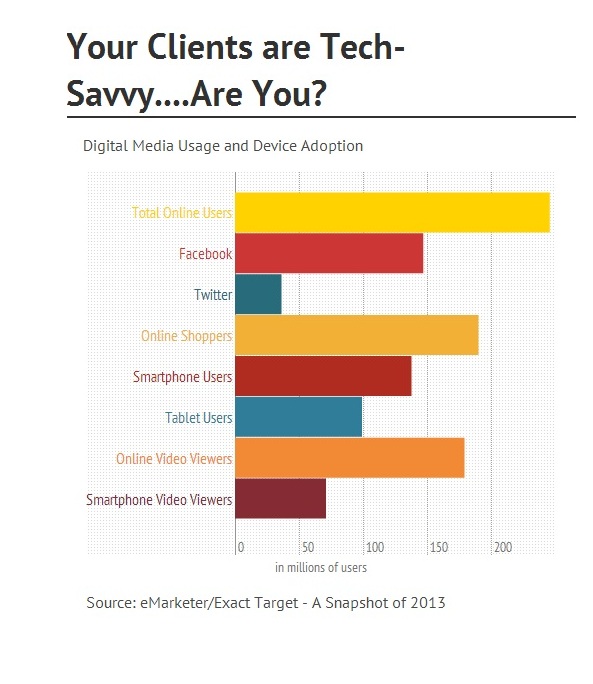Now that the dust has settled after the National Association of Realtors board of directors approved changes to the operating agreement for its official website, realtor.com, many Realtors worry the changes will lead to a dilution of the Realtor brand and the standards of professionalism, including accuracy, that go along with it.
due to the trade group’s decision to allow realtor.com operator Move Inc. to obtain listings from entities that are not Realtor-owned and controlled, and from brokers who are not Realtors, including rentals and new-home listings.
Inman News also received more than 100 emails and comments on inman.com, Facebook and Twitter from readers sharing their views of the changes. While some hailed the move for potentially boosting realtor.com’s ability to compete with rivals Zillow and Trulia, the overwhelming majority blasted the board’s decision.
Screen shot from “Raise the Bar” Facebook page
“I’m disgusted with our ‘leadership.’ Real estate transactions involve the largest financial transaction most individuals will make in their lifetimes. Realtors uphold ethical standards and provide professional (vs. amateur) assistance. We’ve enjoyed some privileges as members. Now, our BIGGEST privilege has been stripped from us,” commented Evergreen, Colo., Realtor Jeri Groves.
“With no distinction between anyone with an ‘armchair quarterback’ opinion and professional Realtors, we’ve just denigrated our brand — one that already has a reputation little better than used car salespeople in the eyes of the public. This is SHAMEFUL! Move.com wins, and every Realtor loses. The entire NAR leadership should be recalled. Let’s start a petition!!!!”
Keller Williams agent Matty Green commented, “This is crazy! We pay dues to NAR for the privileges of membership, including having our listings on realtor.com. Realtor.com in turn charges us for the privilege to have our name and phone number (instead of the broker’s) show up on the listing in order to have a ‘competitive edge’ over nonpaying agents.
“Now there is nothing to stop realtor.com from charging us more so that we can compete with non-Realtors advertising on the same site. Maybe NAR should have negotiated free preferred listing status on realtor.com for all NAR members in this deal. My guess is realtor.com makes too much money off of us and they wouldn’t have agreed to it. That’s why this happened behind closed doors and without our input.”
Marty Sorrentino of Re/Max Innovations in Wantagh, N.Y., said he couldn’t grasp the concept of having non-Realtors post their listings on realtor.com. “Realtors have to adhere to strict guidelines and policies (including a strict code of conduct and mandatory ethics courses every four years) all designed to protect the public. Now realtor.com is going to allow builders and other non-Realtor persons to have access to ‘our’ site,” he said.
Marvin Shelley of Fayetteville, Ark.-based The Shelley Group commented, “If I quit paying NAR, can I then just post my listings on realtor.com for free? Is that what I read?”
Inman News reader Kathy Evans said consumers would suffer from the move rather than benefit. “Yes, they will have more listings at their fingertips, but they will not be serviced by Realtors. NAR directors have let us down,” she said.
Another reader echoed many in worrying about one of realtor.com’s most distinguishing features and the focus of its recent marketing campaign: the accuracy of its listing information.
“This is a sad day for Realtors. We need to remove ALL our listings from realtor.com and take back our data. Realtor.com, while no longer the most browsed source … was definitely the best rated and most valued source of listings because it represented a higher degree of reliability and integrity of the data,” he said.
“Now, NAR is allowing others to input data that we can’t verify. So, now we have a product that our name is attached to, yet we have no control over it. I’m sad to have my name associated with realtor.com.”
Others expressed concern that the move would make realtor.com no better than the third-party sites it rivals.
“The changes on realtor.com will create great competition only if listings are updated frequently. Listings on Trulia and Zillow will show active after been sold a year ago. So daily updates of listings on the site will make a big difference,” said Tennyson Jusu of Solid Source Realty.
Dale Pearson at Carolyn Pearson Real Estate in Overland Park, Kan., said NAR’s leaders “just don’t get it.”
“In today’s world it’s not about who is No. 1 online. This is not a zero-sum game. Our buyers and sellers are smart. Like you and me, they search multiple sites for information. To think they can gain a monopoly (to charge us more fees) — a site with info that nobody else has — is ridiculous and old school,” he said.
“Now, we’ve become ‘the same’ with the competition. This is actually to their benefit — not NAR’s. Sameness is boring. We’re in a reactive mode, not proactive, and have become a follower, not a leader.”
“Now there is nothing to stop realtor.com from charging us more so that we can compete with non-Realtors advertising on the same site. Maybe NAR should have negotiated free preferred listing status on realtor.com for all NAR members in this deal. My guess is realtor.com makes too much money off of us and they wouldn’t have agreed to it. That’s why this happened behind closed doors and without our input.”
Marty Sorrentino of Re/Max Innovations in Wantagh, N.Y., said he couldn’t grasp the concept of having non-Realtors post their listings on realtor.com. “Realtors have to adhere to strict guidelines and policies (including a strict code of conduct and mandatory ethics courses every four years) all designed to protect the public. Now realtor.com is going to allow builders and other non-Realtor persons to have access to ‘our’ site,” he said.
Marvin Shelley of Fayetteville, Ark.-based The Shelley Group commented, “If I quit paying NAR, can I then just post my listings on realtor.com for free? Is that what I read?”
Inman News reader Kathy Evans said consumers would suffer from the move rather than benefit. “Yes, they will have more listings at their fingertips, but they will not be serviced by Realtors. NAR directors have let us down,” she said.
Another reader echoed many in worrying about one of realtor.com’s most distinguishing features and the focus of its recent marketing campaign: the accuracy of its listing information.
“This is a sad day for Realtors. We need to remove ALL our listings from realtor.com and take back our data. Realtor.com, while no longer the most browsed source … was definitely the best rated and most valued source of listings because it represented a higher degree of reliability and integrity of the data,” he said.
“Now, NAR is allowing others to input data that we can’t verify. So, now we have a product that our name is attached to, yet we have no control over it. I’m sad to have my name associated with realtor.com.”
Others expressed concern that the move would make realtor.com no better than the third-party sites it rivals.
“The changes on realtor.com will create great competition only if listings are updated frequently. Listings on Trulia and Zillow will show active after been sold a year ago. So daily updates of listings on the site will make a big difference,” said Tennyson Jusu of Solid Source Realty.
Dale Pearson at Carolyn Pearson Real Estate in Overland Park, Kan., said NAR’s leaders “just don’t get it.”
“In today’s world it’s not about who is No. 1 online. This is not a zero-sum game. Our buyers and sellers are smart. Like you and me, they search multiple sites for information. To think they can gain a monopoly (to charge us more fees) — a site with info that nobody else has — is ridiculous and old school,” he said.
“Now, we’ve become ‘the same’ with the competition. This is actually to their benefit — not NAR’s. Sameness is boring. We’re in a reactive mode, not proactive, and have become a follower, not a leader.”
Commenting on Inman News’ Facebook page, Kathy Frieze, a real estate agent with Re/Max Integrity in Corvallis, Ore., said, “Realtor.com is not succeeding because the site is not consumer-friendly and its management is living in the age of the dinosaurs. Allowing rentals and non-MLS listings will not change their underlying problems. NAR needs to break loose from Move and align themselves with (a) more progressive model.”
Deborah Madey, a broker at Peninsula Realty Group, said she didn’t see how the vote benefits Realtors. “How will this impact members and their businesses? I’m not convinced that there is no benefit. I am curious to understand it. I am extremely bothered that the impact to members is not a point of discussion. If (realtor.com) is king or not is irrelevant unless it brings value to members,” she said.
Madey said NAR and realtor.com have not communicated the value of the data integrity and rules Realtors live by when updating listings. “Our data is more accurate because of self-policing forces. It’s updated more frequently. Unavailable properties and bad data must be removed. That benefit may go by the wayside,” she said.
NAR should use realtor.com to communicate the value of Realtors, not just to display listings from multiple sources, Madey said. “Why does the public think there is no difference between a Realtor and a licensee. I think that (realtor.com) should be about (Realtor) listings, about what NAR does for the public (i.e., all the lobbying that is done to protect property rights, etc.). I think that (realtor.com) should be a public-facing site that helps consumers learn about everything real estate from Realtors and NAR,” she said. “I think it’s time that our branding move up on the priority list. We don’t do it very well, and never have. And, we’re still dismissing it,” she added.
Sam DeBord, managing broker and team leader at Coldwell Banker Danforth, agreed with Madey but said the call for better branding had to be mixed with the realities of online traffic trends.
“Realtor.com is a marketplace. Realtor is a professional brand. We need to draw maximum consumer traffic to realtor.com where we can push the brand. If that means getting ‘all listings’ (which consumers demand) and then explaining the difference, so be it. Branding harder in a shrinking market is not good strategy,” he said.
Beth Braznell, a NAR director who attended last week’s special meeting, said the board’s vote was not about protecting the Realtor brand. “There is no Realtor brand in the consumer’s mind. The decision … was exclusively about competing with Zillow from the standpoint of keeping Zillow from doing to us what Expedia did to travel agents and to protect the investment NAR has made in (realtor.com),” she said.
In response to concerns from some Realtors, NAR spokeswoman Stephanie Singer said the revised agreement will reinforce the Realtor brand. “Realtors want realtor.com to have the resources and flexibility it needs to give consumers what they want while ensuring that today’s buyers and sellers can continue to rely on Realtors for the most accurate, credible market information,” she said.
Changes to realtor.com will include features that emphasize to consumers the value Realtors bring to consumers, both when buying and selling a home and in protecting the American dream of homeownership.”
While not part of the approved amendments, NAR and Move said last week realtor.com will reinforce the value of using a Realtor when buying, selling or investing in real estate, and will give consumers tools to differentiate between Realtors and non-Realtors.
Move Chief Strategy Officer Errol Samuelson said realtor.com would “call out” when a listing belongs to a Realtor and highlight any certifications or designations that Realtor has. In addition, the site will have targeted messages on search result pages and listing pages highlighting Realtors’ advocacy work on behalf of local homeowners, he said.
Move declined to provide further details about the plans being considered to differentiate Realtors until they are formally launched “for competitive reasons.” Move’s Form 8-K detailing changes to the operating agreement for investors does not mention specific plans to boost the Realtor brand.
In a Q-and-A article about the realtor.com changes, NAR said the Realtor brand will continue to be pre-eminent on the site, not just in the domain name but in every aspect of the site, its mobile apps and its public relations.
“When the changes are implemented, the site will continue to clearly distinguish Realtor-represented listings and will use language that more prominently emphasizes the difference between Realtors and non-Realtors,” said Bob Goldberg, president and CEO of NAR subsidiary Realtors Information Network Inc., or RIN.
NAR pointed out that 1999 NAR President Sharon Millett, who had witnessed realtor.com’s inception, had been at the meeting and said now was the time to compete “head-to-head” and give consumers the accurate, comprehensive site they want.
“There was a time when restricting the site to only Realtor listings was appropriate,” she said, “but that time has passed.” The article noted member dues do not go to the operation of realtor.com, and NAR does not collect revenue when members purchase realtor.com products and services. The article also said many directors had expressed concern about non-Realtors getting leads from realtor.com, and said members of the RIN board would be “addressing the issue.”
Move CEO Steve Berkowitz sought to allay Realtors’ concerns about maintaining realtor.com’s accuracy. “Comprehensiveness does not come at the cost of accuracy. What our goal in this process and in everything we’re trying to do is to allow the consumer to not only see a comprehensive set of data but also identify the difference between the data that has been delivered with authority (by) Realtors,” he told Inman News.
“We don’t take the ‘what’s for sale’ listings from just anybody,” he added.
Listing information will be sourced from “authoritative sources,” Berkowitz said. For-sale homes data will continue to be sourced primarily from brokers and multiple listing services, Realtor-affiliated or not, he said, and new-homes data will come from BDX, a consortium of top homebuilders that also powers New Home Source, of which Move owns 51 percent. Consumers will not be allowed to upload listings.
“The focus on accuracy is absolutely core to everything that we do. (Sourcing from MLSs is) almost a guarantee of accuracy because listings are required by their MLSs to be accurate,” Berkowitz said.
“We believe the MLSs are the best source of information about homes for sale and that’s why we’ve spent 14 years building those relationships. The MLSs are very important to the process,” he added.
He said the changes would actually bring more accuracy to the site by identifying the source of a listing and designating when it has been provided by a Realtor.
“The definition of data accuracy is not only that the data is accurate but that the consumer knows where the data comes from,” Berkowitz said.
Identifying Realtor-represented listings as such amid those from other sources will actually strengthen the Realtor brand, he said.
“It’s best to have a home listed with a Realtor and buy a home with a Realtor but not every home is listed with a Realtor and it’s important to know that to have your Realtor ask the questions they need to ask,” he said.
Realtor.com will inform consumers that the best professional to work with is a Realtor, Berkowitz said. This will include outlining the advantages of working with a Realtor, the Realtor code of ethics, and what Realtors do to support homeownership.
“Our job as a business is to build the brand and to build the consumers’ relationship with that brand, and that’s a foundation built on trust, which is built around education, awareness and accuracy,” he said.
“If we walk out of this with one thing we’re going to accomplish, it’s we’ve built the trust in the Realtor brand,” he added.
Move said it was still evaluating its content sources “within the realtor.com accuracy proposition” and would include criteria regarding how often a source updates its content. The site will continue to show the last time a listing was updated.
While 90 percent of realtor.com’s listings are currently updated every 15 minutes, Berkowitz said he was unsure whether Move would require sources of new homes and rental listings to update that often.
“I know we have the single most accurate source of new-homes data. We already have the spec homes where builders built it and put it in the MLS — this (change) is about new-home communities where the inventory is about how many lots are available,” he said.
Currently, Move is getting its rental information from MLSs and apartment builders directly, but is evaluating how to bring in additional content.
“We’re not getting into the ‘free for all’ marketplace (for rentals),” he said. “As we look at it and continue to expand it, we have lots and lots of authoritative sources out there for rentals,” he added.
While accuracy matters to both those looking for rentals and for-sale homes, the stakes are higher with for-sale homes because of the price tag involved, Berkowitz said.
“We don’t take the ‘what’s for sale’ listings from just anybody,” he added.
Listing information will be sourced from “authoritative sources,” Berkowitz said. For-sale homes data will continue to be sourced primarily from brokers and multiple listing services, Realtor-affiliated or not, he said, and new-homes data will come from BDX, a consortium of top homebuilders that also powers New Home Source, of which Move owns 51 percent. Consumers will not be allowed to upload listings.
“The focus on accuracy is absolutely core to everything that we do. (Sourcing from MLSs is) almost a guarantee of accuracy because listings are required by their MLSs to be accurate,” Berkowitz said.
“We believe the MLSs are the best source of information about homes for sale and that’s why we’ve spent 14 years building those relationships. The MLSs are very important to the process,” he added.
He said the changes would actually bring more accuracy to the site by identifying the source of a listing and designating when it has been provided by a Realtor.
“The definition of data accuracy is not only that the data is accurate but that the consumer knows where the data comes from,” Berkowitz said.
Identifying Realtor-represented listings as such amid those from other sources will actually strengthen the Realtor brand, he said.
“It’s best to have a home listed with a Realtor and buy a home with a Realtor but not every home is listed with a Realtor and it’s important to know that to have your Realtor ask the questions they need to ask,” he said.
Realtor.com will inform consumers that the best professional to work with is a Realtor, Berkowitz said. This will include outlining the advantages of working with a Realtor, the Realtor code of ethics, and what Realtors do to support homeownership.
“Our job as a business is to build the brand and to build the consumers’ relationship with that brand, and that’s a foundation built on trust, which is built around education, awareness and accuracy,” he said.
“If we walk out of this with one thing we’re going to accomplish, it’s we’ve built the trust in the Realtor brand,” he added.
Move said it was still evaluating its content sources “within the realtor.com accuracy proposition” and would include criteria regarding how often a source updates its content. The site will continue to show the last time a listing was updated.
While 90 percent of realtor.com’s listings are currently updated every 15 minutes, Berkowitz said he was unsure whether Move would require sources of new homes and rental listings to update that often.
“I know we have the single most accurate source of new-homes data. We already have the spec homes where builders built it and put it in the MLS — this (change) is about new-home communities where the inventory is about how many lots are available,” he said.
Currently, Move is getting its rental information from MLSs and apartment builders directly, but is evaluating how to bring in additional content.
“We’re not getting into the ‘free for all’ marketplace (for rentals),” he said. “As we look at it and continue to expand it, we have lots and lots of authoritative sources out there for rentals,” he added.
While accuracy matters to both those looking for rentals and for-sale homes, the stakes are higher with for-sale homes because of the price tag involved, Berkowitz said.















